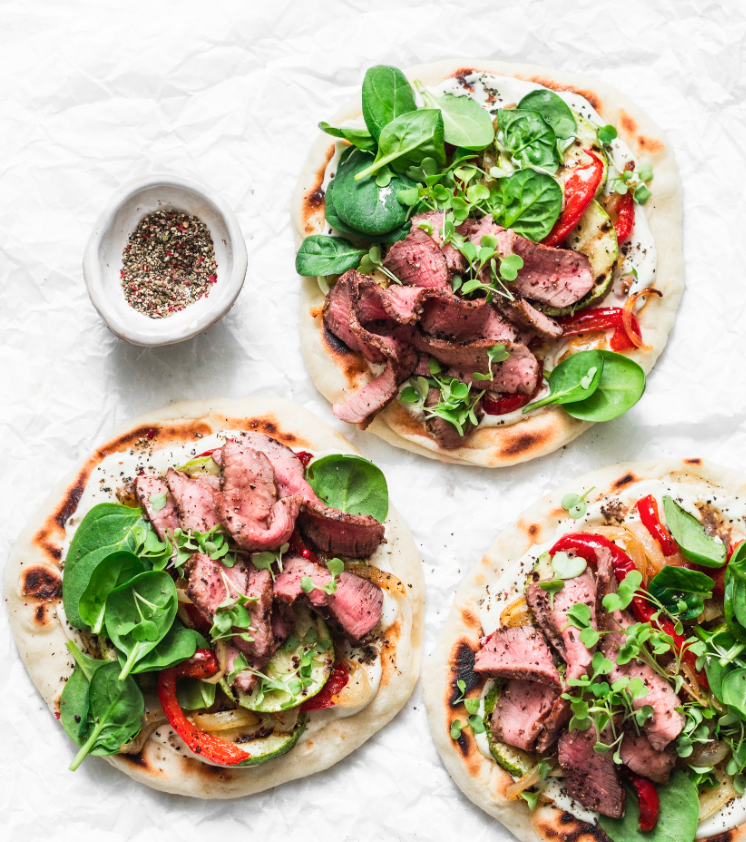Mindful Dining: 7 Healthy Tips for Eating Out
- Published: Wednesday, August 13th 2014
- in Nutrition
The prospect of going out for a meal conjures up pleasant images: ordering tasty food without having to cook it, enjoying it with friends and family, and not having to do the dishes! But these days, concern about the healthfulness of restaurant meals have many of us in a push-pull relationship with eating out.

How can you maximize your enjoyment without jeopardizing your health?These tips can help you make choices that tantalize your taste buds and leave you feeling great!
Go to the restaurant hungry, but not too hungry. The common diet technique of “banking calories” by skipping meals or eating very lightly in order to save calories for another meal actually sets us up for overeating at the later meal. That’s because our hunger is like a rubber band – if you pull it back too far, it can overshoot its mark.
The ideal is to eat well-balanced meals in adequate amounts to satisfy you just long enough so that you are hungry when it’s time to eat again. If you’re eating out at 8:00 pm, that might mean an afternoon snack that can carry you through. Few of us can go longer than five hours or so before we begin to get hungry.
Think about what you really want before ordering. Take a moment to think about what would really taste good to you before you open the menu. That can help you focus in on what you would really like, instead of being confused by too many choices, or sidetracked by what your dining partner is ordering. Our bodies are very capable in guiding us in what we need at any one time for both nutrition and pleasure, if we take the time to stop and listen.
Balance your meal. If your choice doesn’t include vegetables, figure out how to add some. Besides offering a wealth of health-supportive nutrients, vegetables also offer fluid, which helps dilute the richer choices in our meals and end up feeling more satisfied with less. That’s not to say that you want to eat salads and the like instead of protein foods and starches. You need all of these foods for a meal that will leave you content once you finish the meal and for several hours after.
Eat mindfully. That means tuning in and savoring the smells, appearance, tastes, textures, and any other pleasing aspects of the food before you. One of the ways our bodies tell us when we are becoming satisfied is for the pleasing taste of foods to decline – the first bite is the tastiest and it goes downhill from there. Tuning in helps us be aware of that signal from our bodies.
Enjoy dessert if you really want it. This helps avoid feelings of deprivation that may send you to the pantry after you return home. If you’d rather not have the whole thing, consider sharing one with a friend, or the whole table. If you’re too full but still want dessert, there’s always the option of getting it to go so you can enjoy it later.
Drink plentifully. I’m not talking about cocktails or wine although both of those are fine (recommendations are no more than one drink/day for women and two for men). Instead, I’m talking about water, including sparkling waters. As pointed out earlier, fluid plays a role in helping us feel satisfied as part of a well-balanced meal. Forget the idea of filling up on fluid in order to eat less, though. That just means you’ll likely get hungry again faster and maybe at an inconvenient time.
Enjoy a little passagata after your meal. No, that’s not a pasta dish. It’s a leisurely walk in Italian, and it’s just the thing to help you digest your meal. In Italy, that’s called a digestivo – although they’re often thinking about a pre- or post-meal alcoholic drink that supposedly helps with digestion. Switching to physical activity as your digestivo can be a perfect ending to a thoroughly enjoyable meal.
Buon appetito!



